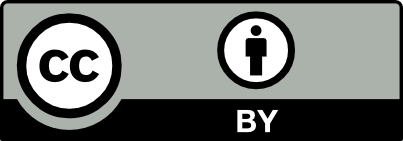DOI 10.15507/2079-6900.27.202502.243-254
Original article
ISSN 2079-6900 (Print)
ISSN 2587-7496 (Online)
MSC2020 65L20
A Numerical Algorithm for Studying Subsonic Chemically Reacting Flow in the Presence of Laser Radiation
E. E. Peskova, O. S. Yazovtseva, M. S. Mustaykin
National Research Mordovia State University (Saransk, Russian Federation)
Abstract. The article presents a numerical algorithm for studying subsonic viscous chemically active flows in the presence of laser radiation. The process model is described in the Navier – Stokes approximation adjusted for the subsonic flow regime, with addition of source terms corresponding to chemical transformations. An additional ordinary differential equation describing the propagation of laser radiation along the length of the region under study is introduced as well. The computational algorithm is based on splitting by physical processes. This makes it possible to calculate separately changes in concentrations during chemical transformations, convective fluxes, dissipative terms, dynamic pressure deviation and propagation of laser radiation. To account for the dissipative terms (diffusion, viscosity, and thermal conductivity), the local iteration method based on Chebyshev polynomials’ ordering. Due to the possible use of a larger total calculation time step, the software implementation of the constructed algorithm reveals shorter calculation times using the local iteration method for calculating dissipative terms in comparison with the algorithm calculating them based on a scheme with central differences. The algorithm was verified using the example of methane conversion by comparing it with the calculation of the stoichiometric balance of the brutto-reaction, as well as by studying the convergence of the solution on a sequence of thickening grids. Based on the developed algorithm, a numerical study of non- oxidative conversion of methane under the influence of laser radiation in a circular tube was carried out, and graphs of the distribution of the main characteristics of the mixture were obtained.
Key Words: Navier-Stokes equations, LI-M scheme, subsonic flow, non-oxidative methane conversion, laser radiation
For citation: E. E. Peskova, O. S. Yazovtseva, M. S. Mustaykin. A Numerical Algorithm for Studying Subsonic Chemically Reacting Flow in the Presence of Laser Radiation. Zhurnal Srednevolzhskogo matematicheskogo obshchestva. 27:2(2025), 243–254. DOI: https://doi.org/10.15507/2079-6900.27.202502.243-254
Submitted: 18.02.2025; Revised: 22.04.2025; Accepted: 28.05.2025
Information about the authors:
Elizaveta E. Peskova, Ph.D. (Phys. and Math.), Associate professor, Senior Researcher, Department of Applied Mathematics, National Research Mordovia State University (68/1 Bolshevistskaya St., Saransk 430005, Russia), ORCID: http://orcid.org/0000-0003-2618- 1674, e.e.peskova@math.mrsu.ru
Olga S. Yazovtseva, Ph.D. (Phys. and Math.), Senior Researcher, Department of Applied Mathematics, National Research Mordovia State University (68/1 Bolshevistskaya St., Saransk 430005, Russia), ORCID: https://orcid.org/0000-0001- 8075-4491, yaos@math.mrsu.ru
Maxim S. Mustaykin, student of the Faculty of Mathematics and Information Technology, Ogarev Moscow State University (68/1 Bolshevistskaya str., Saransk, 430005, Russia), ORCID: https://orcid.org/0009-0000-8690-0787, maksimmustajkin@mail.ru
All authors have read and approved the final manuscript.
Conflict of interest: The authors declare no conflict of interest.
 This is an open access article distributed under the terms of the Creative Commons Attribution 4.0 International License.
This is an open access article distributed under the terms of the Creative Commons Attribution 4.0 International License. 